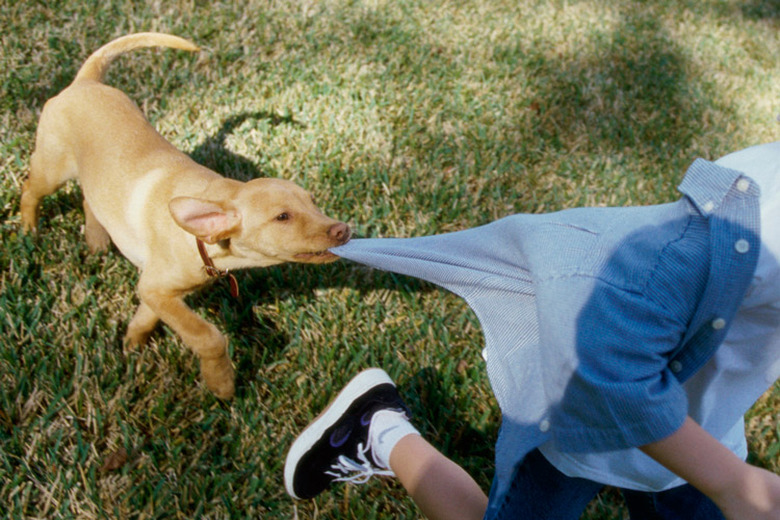What To Do If Your Dog Growls At Kids
Dogs and kids are natural playmates, and many children learn the value of companionship and loyalty from their dogs. But it's not always that easy. Sometimes children and dogs get off to a bad start, especially if the child isn't a member of the family. Other times dogs simply don't like the energy and noise associated with youngsters. Growling is your dog's way of communicating this.
Identify the cause
Identify the cause
Supervise all interactions between the dog and the child. Never leave them alone together.
Identify the type of growl. A low-pitched, sustained growl combined with a fixed gaze and curled lip is a sure sign of aggression and should be corrected. But a brief, slightly higher-pitched growl accompanied by a wagging tail and a "bowing" gesture is a sign that the dog is feeling playful. The latter needn't be corrected at all.
Observe how the child and the dog interact and make notes on what you suspect is causing the dog to growl. If the child is too rough, this may cause the dog to growl out of fear. The dog may fear strangers, children in general or this specific youngster, and the growl might be a defense tactic to tell the child to stay back.
Correct inappropriate treatment of the dog
Correct inappropriate treatment of the dog
Advise the child that the dog doesn't like being petted too firmly or that it needs its own space. Encourage the child to understand that dogs may be scared of new people. Sit with the child and call dog over. Stroke the dog and give them lots of praise for being calm. Invite the child to stroke the dog in the same way you did. Be sure to demonstrate clearly how to stroke an anxious or unsettled dog. Never move the hand straight toward the face, always approach slowly and stroke in the direction that the fur grows to avoid hurting the dog.
Repeat this process once daily, gradually increasing the length of time the child and the dog are exposed to each other. If the dog growls, gently guide him away. Explain to the child that the dog is saying "that's enough petting" or "ouch" and encourage him to respond to the dog's body language.
Correcting the dog's behavior
Correcting the dog's behavior
Give the child a treat to feed to the dog. Put a loose leash on the dog and walk it toward the child, at which point the child can give the dog a treat. Make sure the child gives the treat slowly, with a sufficient portion of the treat sticking out from the hand so that the dog doesn't accidentally nip the fingers. Alternatively, the child can start by putting the treat down in front of the dog.
Praise the dog for as long as it remains passive toward the child. Receiving the treat will help the dog build positive associations with the child. Repeat this process once a day until the dog is more comfortable around the youngster. Walk away from the dog and cease the praise if he growls. This teaches the dog that when he growls, you stop praising him. Dogs love praise from their owners and by continuing this method the dog and child will soon understand how to interact with one another.
